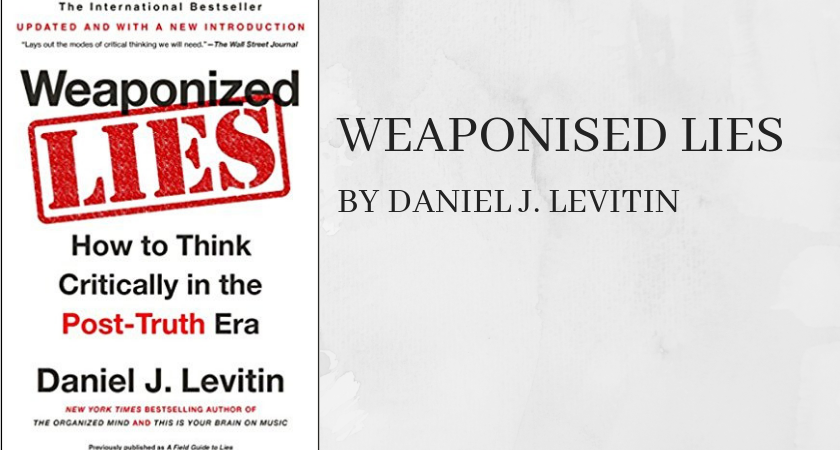We tend to think of Fake News as lies, but do you know that it can be deadly? In India, several people have died due to fake news spread by WhatsApp, leading Time to call the phenomenon a ‘deadly fake news crisis’. In Mexico, fake news has led to similarly deadly violence while the African nations are facing their own set of problems.
In Singapore, we have basic education on how to evaluate news sources – the SBQ is good, as is TOK – but we don’t have anything as comprehensive as this book.
Weaponised Lies, previously published as A Field Guild to Lies, takes apart the ways that people can fool us to help create a more critical and informed reader. The book is broken into three sections:
First: evaluating numbers. This is all about math and shows us how averages, data collection, plausibility, and probabilities are used to fool us, as well as what we can do to prevent ourselves from being fooled.
Part two is about evaluating words, which talks about things like misplaced authority, alternative explanations (the book never names it but it’s something like Occam’s razor), and other ways people can fool us.
The third and last part is called ‘evaluating the world’ and it covers science, logical fallacies, and even Bayesian thinking (which is very closely linked to the maths in part one).
As a whole, the book serves as a good introduction to different ways of looking critically at the news presented to us, but it does miss out a few things. For example, the book doesn’t mention about the tendency towards positive results – i.e. negative studies tend not to be published, even though they are equally important in evaluating if something is true.
Another thing the book missed the opportunity to talk about is the misapplication if theories/frameworks into the real world. Sometimes, certain theories or phrases are misused when transferred from academic circles to real life (from talking with friends who actually study sociology, it seems like ‘cultural appropriation’ is one of them). It’s pretty hard to identify what term is being misused without studying the subject, so if the book could have explained that, it would have been great.
Wishes for more material aside, this book really was useful. I’ve read about maybe 80% of the material before, but it’s good to have it all in one place, so that you can see just how many ways people can lie to you. There is quite a bit of maths in here, but it’s not very difficult – about O levels (mayyyyyybe IB year 5) in terms of difficulty.
Definitely worth a read for everyone living in today’s fake news society.
